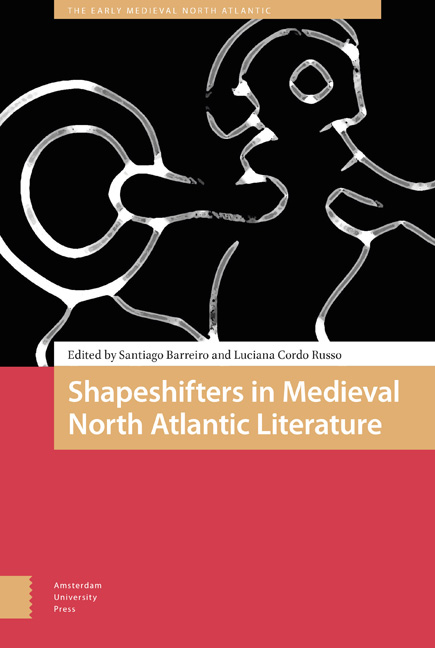Book contents
- Frontmatter
- Contents
- Acknowledgments
- Introduction: Medieval Thought and Shapeshifting
- 1 Wundor wearð on wege‘a wonder happened on the way’: Shifting shapes and meanings in Old English Riddles
- 2 The Big Black Cats of Vatnsdalr and Other Trolls: Talking about shapeshifting in medieval Iceland
- 3 The Hoard Makes the Dragon: Fáfnir as a Shapeshifter
- 4 Eigi í mannligu eðli: Shape, Monstrosity and Berserkism in the Íslendingasögur
- 5 The Cursed and the Committed: A Study in Literary Representations of ‘Involuntary’ Shapeshifting in Early Medieval Irish and Old Norse Narrative Traditions
- 6 Unde sunt aues istae?: Notes on Bird-Shapeshifting, Bird Messengers, and Early Medieval Hagiography
- 7 Sin, Punishment, and Magic: Changing Form in Medieval Welsh Literature
- Index
6 - Unde sunt aues istae?: Notes on Bird-Shapeshifting, Bird Messengers, and Early Medieval Hagiography
Published online by Cambridge University Press: 16 February 2021
- Frontmatter
- Contents
- Acknowledgments
- Introduction: Medieval Thought and Shapeshifting
- 1 Wundor wearð on wege‘a wonder happened on the way’: Shifting shapes and meanings in Old English Riddles
- 2 The Big Black Cats of Vatnsdalr and Other Trolls: Talking about shapeshifting in medieval Iceland
- 3 The Hoard Makes the Dragon: Fáfnir as a Shapeshifter
- 4 Eigi í mannligu eðli: Shape, Monstrosity and Berserkism in the Íslendingasögur
- 5 The Cursed and the Committed: A Study in Literary Representations of ‘Involuntary’ Shapeshifting in Early Medieval Irish and Old Norse Narrative Traditions
- 6 Unde sunt aues istae?: Notes on Bird-Shapeshifting, Bird Messengers, and Early Medieval Hagiography
- 7 Sin, Punishment, and Magic: Changing Form in Medieval Welsh Literature
- Index
Summary
Abstract
The birds in the Navigatio Sancti Brendani, as they tell Saint Brendan, are supernatural beings that have undergone metamorphosis, and in that new shape they have a message to deliver to the pilgrim monks. Along with its Celtic background of well-known animal shapeshifting —the story of Tuan Mac Cairill, the Children of Lir, the Buile Shuibhne (‘The madness or frenzy of Suibhne’, in which the mad king becomes one with the birds) — we may find the presence of other supernatural birds in Irish vernacular immrama (otherworld journey tales). But bird imagery in hagiography, and, especially the function of birds as heavenly messengers, merge with the Celtic literary legacy in order to sing praise of God in this early medieval narration.
Keywords: Birds, Irish, Hagiography, Supernatural
Other echoes
Inhabit the garden. Shall we follow?
Quick, said the bird, find them, find them,
Round the corner. Through the first gate,
Into our first world, shall we follow
The deception of the thrush? Into our first world.
More than a hundred manuscripts copied throughout Europe contain the text of the Navigatio Sancti Brendani Abbatis, most probably written for the first time by a scottus peregrinus or a monk from an Irish foundation in Lotharingia, around the second half of the 10th century. This renowned work condenses a number of features cherished by the clerical authors of the time: a voyage narrative retelling a pilgrimage to the Promised Land adorned with the natural wonders of Creation; the presence of supernatural and thaumaturgical forces; the use of biblical and allegorical elements; and a hagiographic development in a monastic context, with a corresponding liturgical timing.
The presence of animals, strange beasts, and birds is fundamental for the voyage narrative itself: we find common island fauna and the seabirds, but also Jasconius the whale, the monstrous fish, the threatening gryphon, the friendly otter, the flock of underwater creatures, and the great, wonderful and helping bird which brought food to the monks and defended them against the gryphon.
- Type
- Chapter
- Information
- Shapeshifters in Medieval North Atlantic Literature , pp. 127 - 154Publisher: Amsterdam University PressPrint publication year: 2018



